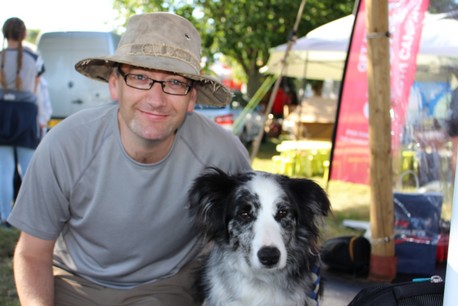
Andrew and Merlin at BBC Countryfile Live in 2016
Where you can go with your Dog
Every time Andrew speaks at an event with dogs, he gets asked lots of questions about where people can go walking with their dog. Some are confused about whether they can take their dog on a Public Bridleway; others have been told they can't take their dogs through farms; others are worried about letting their dogs off leads.
So, we thought a guide to where dog owners can walk with their dogs would be quite useful...
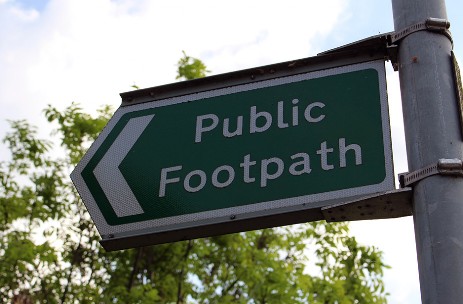
Public Rights of Way
Public Rights of Way in England and Wales provide many thousands of miles of paths, trails and tracks for you to enjoy with your dog.
Public Rights of Way come in different categories which allow a different level of access...

Public Footpaths - for walkers

Public Bridleway - for walkers, horse riders and cyclists

Public Byway - for walkers, horse riders, cyclists and off-road vehicles
You can walk your dog on any Public Right of Way
- even if it passes through private land, such as a farm.
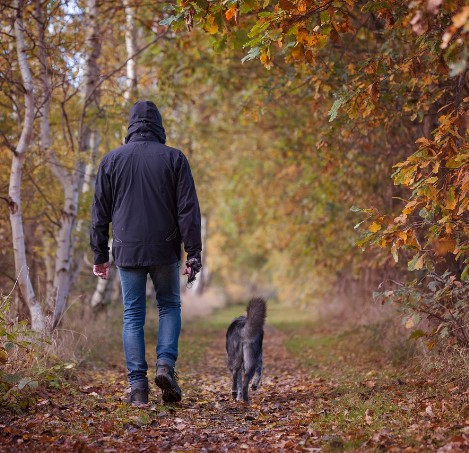
Dogs are considered to be a ‘natural accompaniment’ - a term used in a 19th century court case to describe anything which might normally be taken by a walker - and so dogs can be taken on public rights of way. And just as a land owner can not stop you from walking with a backpack, their also can't stop you walking with a dog - even if it is through a farm or country estate.
There is also no law which states a dog must be kept on a lead
when using a public right of way.
However, local authories can make orders when they wish under section 27 of the Road Traffic Act 1988 to make it a requirement on have dogs on leads on specific paths.
But, just like their owner, a dog must remain on the path and can not legally be allowed to wander off the public right of way. If a dog does, then an act of trespass may be committed against the landowner.
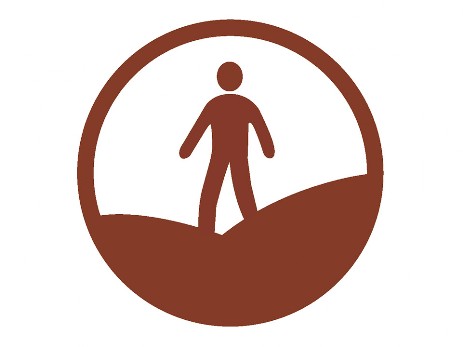
Open Countryside
Since 2004, new laws have opened up large areas of mountain, moor, heath and down across England and Wales. This land is called Open Access land, and it means walkers have the right to walk anywhere in the designated area - and not having to stick to any public rights of way which also cross access land.
Open Access land is shown in the countryside by the person in a circle logo; it is shown on Ordnance Survey maps too.
Areas of Open Access land are some of the most tranquil and beautiful parts of our landscape - some of which haven't been legally open to ramblers for hundreds of years.
To find out more about Open Access land, visit our guide here.
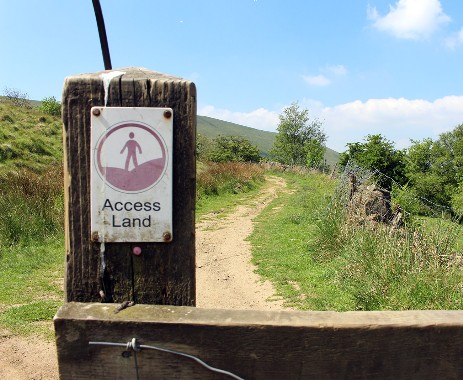
Dogs are allowed on Open Access land -
but the law lays down more restrictions than on Public Rights of Way...
The Countryside and Rights of Way (CRoW) Act 2000 is the legislation which abled Open Access in England and Wales, and it states dogs are allowed and welcome on Open Access land - with the following requirements...
- Dogs are kept on a lead of no more than 2 metres long between 1st March and 31st July
- Dogs are also kept on a lead of no more than 2 metres long near farm animals at all times
- Some places of Open Access land may be temporarily or permanently closed to all dogs, to protect wildlife or for land management needs.
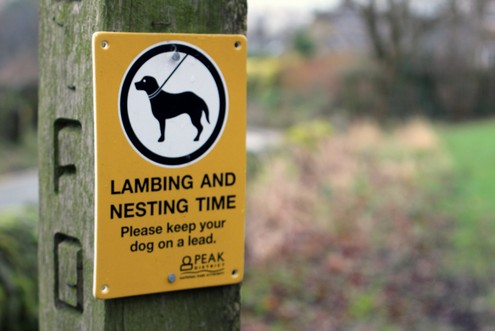
If Open Access land is temporarily or permanently closed to all dogs, it will be clearly signposted at the boundary of that area of land with signs like these.
Such restrictions are also available to be searched in advance on the web. In England, use Natural England's search function here.
Natural Resources Wales are working on a new system to show where Open Access restrictions are, and so this information isn't available online at the moment, but should eventually be available here.
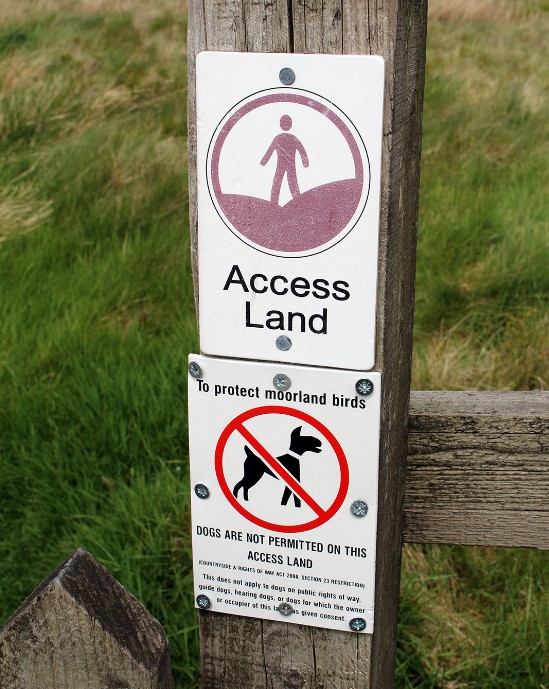
Even if Open Access land is closed to dogs,
you can still walk across it with a dog using any Public Rights of Way.
Other access
There are many other areas you can go walking with your dog...
- Country Parks
There are hundreds of country parks through Britain and the paths which run through them are perfect places to go walking with your dog.
Take Pennington Flash in Wigan, for example...
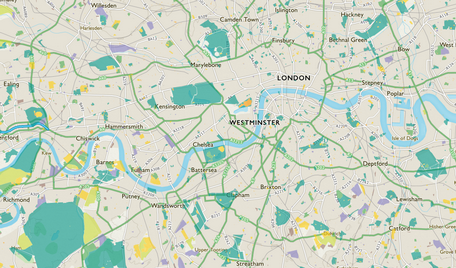
- Green Spaces
London is just one of the many cities which has many examples of Green Spaces to go walking with your dog.
The Ordnance Survey's digital OS Maps service has a layer which shows all the Green Spaces in a particular area. See how many Green Spaces you can discover...
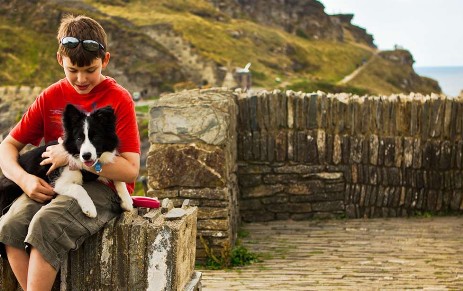
- English Heritage properties
Many English Heritage properties are dog-friendly - from vast Roman forts to spacious abbey ruins, share a day out with your canine friend worth barking about.
Visit the English Heritage website here for more details about venues all across England which are dog-friendly... and at the same time, why not think about becoming a member too?Unlimited access to over 400 historic places for a whole year from just £3.75 a month. Visit here for more information.
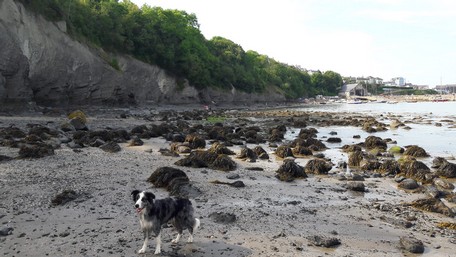
And don't forget...
- Beaches
- Canal tow paths
- National Trust Access Land
- Forestry Commission woodland
- parts of the MOD estate at certain times of year
- Common Land
- Woodland managed by Local Authorities
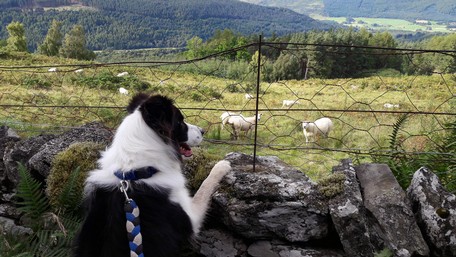
Walking with Dogs in Scotland
Scotland, with its Right to Roam, has a completely different way of access for walkers. Put simply, under the Land Reform (Scotland) Act 2003, walkers have a statutory right of public access to most land and inland water.
These legal rights are based on the principle of responsible access, with obligations both on the access users and on the managers of the land. Guidance on these responsibilities is set out out in the Scottish Outdoor Access Code, but for a summary, visit our page here.
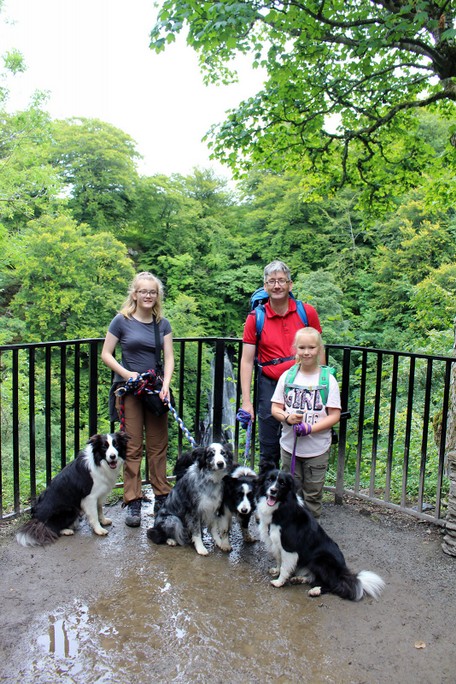
The Scottish Outdoor Access Code states the right to roam applies to people walking dogs, as long as their dogs are kept under proper control.
The main responsibilities on dog owners are:
- Never let your dog worry or attack farm animals.
- Don't take your dog into fields where there are lambs, calves or other young farm animals.
- If you go into a field of farm animals, keep your dog(s) on a short lead or under close control and keep as far as possible from the animals.
- If cattle react aggressively and move towards you, keep calm, let the dog go and take the shortest, safest route out of the field.
- Don't take your dog into fields of vegetables or fruit unless there is a clear path, such as a core path or right of way, and keep your dog to the path.
- During the breeding season (usually April-July) keep your dog on a short lead or close at heel in areas such as moorland, forests, grasslands, loch shores and the sea shore to avoid disturbing birds that nest on or near the ground.
- Avoid causing concern to others by keeping your dog close at heel or on a short lead.
- Pick up and remove your dog's faeces if it defecates in a public open place.
